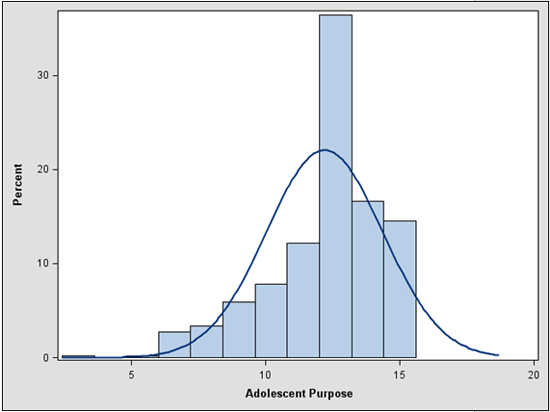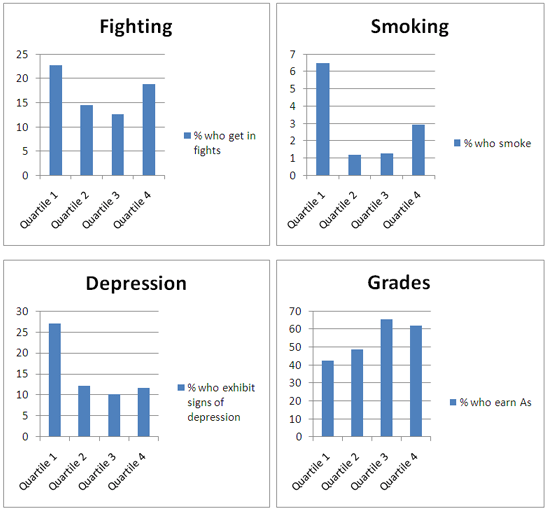Purpose
Definition
A sense of directedness that stimulates goals, manages behaviors, and provides a sense of meaning. Purpose is a broad and sustained intention to accomplish something one finds meaningful to the self, and often also of consequence to the world beyond the self. Purpose drives life goals and daily decisions by guiding the use of finite attention and energy.
-
(Sense of purpose that) manages behavior
-
(Sense of purpose that) provides meaning
-
(Sense of purpose that) goes beyond the self
Adolescent Scale
Please indicate how much you agree or disagree with the following statements. (Strongly agree, Somewhat agree, Neither agree nor disagree, Somewhat disagree, Strongly disagree)
-
My life has no meaning.
-
My life will make a difference in the world.
-
I am doing things now that will help me to achieve my purpose in life.
Adolescent Scale Psychometric Properties and Fit Indices

-
Alpha=0.54 (marginal)
-
CFI=0.997 (excellent)
-
TLI=0.995 (excellent)
-
RMSEA=0.033 (excellent).
Subgroup Model Fit
We tested the final adolescent and parent models with subgroups to examine whether the model fit for different subsets of respondents in the same manner as the overall sample. Using the same fit statistic requirements as the overall models, a check mark indicates that the model fit for the subgroup. Household income is defined as “low” if it is less than the median income in the sample. “High” household income indicates that the household income was equal to or greater than the sample’s median.

Concurrent Validity
Four single item measures were used to examine the concurrent validity of the adolescent scale: a measure of social behavior (fighting), a measure of health behavior (smoking), a measure of emotional health (adolescent-reported depressive symptoms), and a measure of cognitive development (grades).
Concurrent validity was examined in two ways: with bivariate and multivariate analyses. The table below presents the results of multivariate analyses, which control for: teen gender, teen age, teen race, household income, household size, parental education, parental marital status, parental home ownership, parental employment, and metropolitan area and region of residence. The beta coefficient of the relationship between the construct’s scale and outcome is presented.

The graphs below show the bivariate relationships between the adolescent scale and outcomes. Results are presented for relationships that were at least moderately significant (at the 0.10 level) in the multivariate analyses. Note that the y axis scales are different in each graph.

© Copyright 2024 ChildTrendsPrivacy Statement
Newsletter SignupLinkedInYouTube